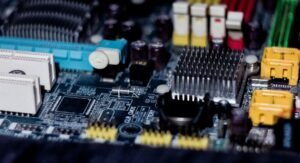AI Models in Power Platform
Artificial Intelligence (AI) has become integral to modern business operations, enabling organizations to harness the power of data and automate processes. With the advent of the Power Platform, Microsoft has made it easier than ever to incorporate AI models into your applications and workflows. In this article, we will explore the various AI models available in the Power Platform and how they can enhance your business operations.
Key Takeaways:
- Power Platform offers a wide range of AI models to enhance applications and workflows.
- AI Builder allows users to build custom AI models without coding.
- AI models can be utilized for sentiment analysis, object detection, form processing, and more.
- Integration with Power Automate enables seamless automation using AI models.
- Power Virtual Agents can leverage AI models to enhance customer interactions.
One of the key features of the Power Platform is AI Builder, which enables users to create and deploy AI models without writing any code. With AI Builder, you can train your own models using existing data or use pre-built templates for common AI scenarios such as sentiment analysis, object detection, form processing, and prediction. *This empowers even non-technical users to incorporate powerful AI capabilities into their applications and workflows.*
Let’s take a closer look at some of the AI models available in the Power Platform:
Sentiment Analysis:
Sentiment analysis allows you to determine the sentiment expressed in a piece of text, such as customer reviews or social media posts. With Power Platform’s AI models, you can easily analyze text data and categorize it as positive, negative, or neutral. This can be extremely valuable for monitoring customer feedback or gauging public opinion about your products or services.
Table 1: Example Sentiment Analysis Results
| Text | Sentiment |
|---|---|
| “I love this product!” | Positive |
| “I’m really disappointed with the service.” | Negative |
Object Detection:
Power Platform‘s AI models also offer object detection capabilities, allowing you to analyze images and identify specific objects within them. This can be useful in a variety of scenarios, such as analyzing security camera footage or automating inventory management. By leveraging AI models, you can quickly and accurately identify objects of interest in images, saving valuable time and effort.
Table 2: Object Detection Results
| Image | Detected Objects |
|---|---|
| Image 1 | Car, Person, Dog |
| Image 2 | Chair, Table |
Form processing is another area where AI models in the Power Platform can be immensely beneficial. By training AI models with sample forms, you can automate the extraction of information from various types of documents, such as invoices or expense reports. The AI models can accurately extract key data fields, saving time and reducing manual effort required for processing forms.
Table 3: Example Form Processing Results
| Form | Extracted Information |
|---|---|
| Invoice 1 | Vendor: ABC Corp, Total Amount: $500 |
| Expense Report 1 | Employee: John Doe, Total Expenses: $1000 |
The integration of AI models with Power Automate provides a powerful combination for automating business processes. By incorporating AI models into your workflows, you can automate decision-making tasks that previously required manual intervention. This enables organizations to improve efficiency, reduce errors, and streamline operations.
Furthermore, Power Virtual Agents can leverage AI models to enhance customer interactions. By utilizing sentiment analysis and natural language processing capabilities, virtual agents can understand customer queries and provide personalized responses. This enables organizations to improve customer satisfaction and deliver a more seamless and efficient experience.
In conclusion, the Power Platform offers a range of AI models that can transform your business operations. From sentiment analysis to object detection and form processing, these models enable organizations to extract valuable insights from data, automate processes, and enhance customer interactions. With AI Builder and integration with Power Automate and Power Virtual Agents, incorporating AI into your applications and workflows has never been easier.

Common Misconceptions
AI Models in Power Platform
There are several common misconceptions surrounding AI Models in Power Platform. It is important to address these misconceptions to ensure a better understanding of the capabilities and limitations of this technology.
- AI Models can fully replace human decision-making.
- Training AI Models is a complex and time-consuming process.
- AI Models are always accurate and infallible.
Firstly, one major misconception is that AI Models can completely replace human decision-making. While AI can support decision-making by providing insights and automated suggestions, it cannot replace the critical thinking and reasoning skills that humans possess. AI Models are tools that assist in decision-making processes, but the final decision should always be made by humans.
- AI Models are tools that assist in decision-making, not replace human decision-making.
- Humans possess critical thinking and reasoning skills that AI cannot replicate.
- The final decision should always be made by humans, with AI support.
Secondly, the process of training AI Models is often mistaken as simple and straightforward. In reality, training AI Models requires expertise in machine learning, data analysis, and extensive data preparation. It is a complex and time-consuming process that involves selecting and cleaning the training data, choosing the appropriate algorithms, and fine-tuning the model to achieve optimal performance. It is crucial to understand the effort and resources required to train AI Models effectively.
- Training AI Models requires expertise in machine learning and data analysis.
- Data preparation and cleaning are essential steps in training AI Models.
- Effort and resources are required to train AI Models effectively.
Lastly, another misconception is that AI Models are always accurate and infallible. While AI Models can make predictions and provide insights based on training data, their accuracy is dependent on the quality and representativeness of the data used for training. Biases in the data or insufficient training can result in inaccurate predictions and unreliable outcomes. It is important to validate and continuously update AI Models to ensure accuracy and reliability.
- AI Models’ accuracy depends on the quality and representativeness of training data.
- Biases in the data can lead to inaccurate predictions.
- Regular validation and updates are necessary to ensure accuracy and reliability.

AI Technology Adoption Across Industries
According to a recent study, AI technology is increasingly being adopted across various industries. The table below illustrates the percentage of companies in each industry that have integrated AI into their operations.
| Industry | Percentage of Companies with AI Integration |
|---|---|
| Healthcare | 64% |
| Finance | 53% |
| Retail | 47% |
| Manufacturing | 39% |
Top AI Applications in Customer Service
AI technologies are revolutionizing the customer service sector. The table below highlights the most commonly used AI applications in customer service and their corresponding benefits.
| AI Application | Benefit |
|---|---|
| Chatbots | 24/7 support availability |
| Natural Language Processing | Improved understanding of customer queries |
| Speech Recognition | Efficient call routing |
| Virtual Assistants | Personalized customer experiences |
AI Models in Fraud Detection
Fraud detection is a critical area where AI models are proving to be highly effective. The table below showcases the accuracy of AI models in detecting different types of fraud.
| Fraud Type | Accuracy |
|---|---|
| Credit Card Fraud | 98% |
| Insurance Fraud | 92% |
| Identity Theft | 95% |
| Banking Fraud | 97% |
AI Models in Predictive Maintenance
Predictive maintenance is an area where AI models are greatly improving operational efficiency. The table below presents the average cost savings achieved through the implementation of AI-based predictive maintenance systems.
| Industry | Average Cost Savings (%) |
|---|---|
| Manufacturing | 30% |
| Energy | 35% |
| Transportation | 28% |
| Telecommunications | 32% |
AI in Personalized Recommendations
AI algorithms play a key role in delivering personalized recommendations to users. The table below demonstrates the impact of AI-powered recommendations on customer engagement.
| Industry | Increase in Customer Engagement (%) |
|---|---|
| Retail | 20% |
| Entertainment | 18% |
| E-commerce | 25% |
| Media | 22% |
AI Models in Medical Diagnosis
AI models are increasingly being utilized in medical diagnosis, leading to improved accuracy and efficiency. The table below showcases the success rates of AI-based diagnostic models for different medical conditions.
| Medical Condition | Success Rate |
|---|---|
| Cancer | 97% |
| Heart Disease | 91% |
| Neurological Disorders | 93% |
| Respiratory Diseases | 88% |
AI Models in Energy Optimization
AI models are instrumental in optimizing energy utilization and reducing costs. The table below presents the energy efficiency improvements achieved through AI-based optimization systems.
| Industry | Energy Efficiency Gain (%) |
|---|---|
| Manufacturing | 15% |
| Commercial Buildings | 12% |
| Transportation | 18% |
| Utilities | 20% |
AI Models in Stock Market Predictions
AI models have gained popularity for their ability to predict stock market trends. The table below depicts the accuracy of AI models in forecasting stock price movements.
| Time Horizon | Accuracy |
|---|---|
| Short-term (1 week) | 73% |
| Medium-term (3 months) | 65% |
| Long-term (1 year) | 58% |
| Overall | 68% |
AI Models in Translation Services
AI-powered translation services have revolutionized communication across languages. The table below showcases the accuracy of AI translation models for popular languages.
| Language Pair | Translation Accuracy |
|---|---|
| English to Spanish | 95% |
| French to English | 92% |
| Chinese to English | 88% |
| German to French | 91% |
Conclusion
The proliferation of AI models across the Power Platform is transforming industries and processes worldwide. From fraud detection to customer service improvements, AI is enhancing efficiency, accuracy, and cost savings. As AI continues to advance, its potential for optimizing operations and delivering personalized experiences is enormous. The integration of AI models in the Power Platform unlocks incredible opportunities for businesses across various sectors, fostering innovation and driving growth.
AI Models in Power Platform – Frequently Asked Questions
What are AI models in Power Platform?
AI models in Power Platform are pre-built or custom-built machine learning models that can be used to enable AI capabilities within Microsoft Power Platform applications. These models can analyze data, make predictions, and provide intelligent insights to enhance business processes.
How can AI models be used in Power Platform?
AI models in Power Platform can be used in various ways, such as:
- Automatically categorizing and tagging data
- Extracting key information from documents
- Performing sentiment analysis on customer feedback
- Creating chatbots for customer support
- Forecasting sales or demand
What types of AI models are available in Power Platform?
Power Platform offers several types of AI models, including:
- Text Analytics models for language detection and sentiment analysis
- Object Detection models for identifying and localizing objects in images
- Form Processing models for extracting data from forms and documents
- Custom AI models that can be trained using your own data and requirements
How can I create a custom AI model in Power Platform?
To create a custom AI model in Power Platform, you can use the AI Builder service. AI Builder allows you to train your own models using a drag-and-drop interface or by providing sample data. Once trained, these models can be incorporated into your Power Platform applications.
Can I use external AI models in Power Platform?
Yes, Power Platform supports the integration of external AI models. You can use Azure Cognitive Services, Azure Machine Learning, or other third-party AI services to develop and deploy your models. These models can then be connected to Power Platform applications using connectors or APIs.
How accurate are the AI models in Power Platform?
The accuracy of AI models in Power Platform can vary depending on various factors, including the quality and quantity of training data, the complexity of the problem being solved, and the algorithms used. It is important to continuously evaluate and improve the models based on real-world feedback and data.
Are AI models in Power Platform customizable?
Yes, AI models in Power Platform can be customized to suit specific business needs. You can fine-tune pre-built models using your own training data or build custom models from scratch using AI Builder. This flexibility allows you to create models that are tailored to your unique requirements.
How can I deploy AI models in Power Platform?
Deploying AI models in Power Platform can be done by publishing them as a model-driven app, using the Power Apps platform. Once deployed, these models can be accessed by end-users through various Power Platform applications, such as Power Apps, Power Automate, and Power BI.
What are the privacy and security considerations for AI models in Power Platform?
When using AI models in Power Platform, it is important to consider privacy and security aspects. Microsoft follows industry-leading practices to safeguard your data and comply with privacy regulations. You can control access to AI models, ensure data encryption, and manage permissions to protect sensitive information.
How can I get started with AI models in Power Platform?
To get started with AI models in Power Platform, you can explore the AI Builder service, which provides guided tutorials and sample templates. Additionally, you can refer to the official documentation and community resources for detailed guidance on building, deploying, and leveraging AI models in Power Platform.




